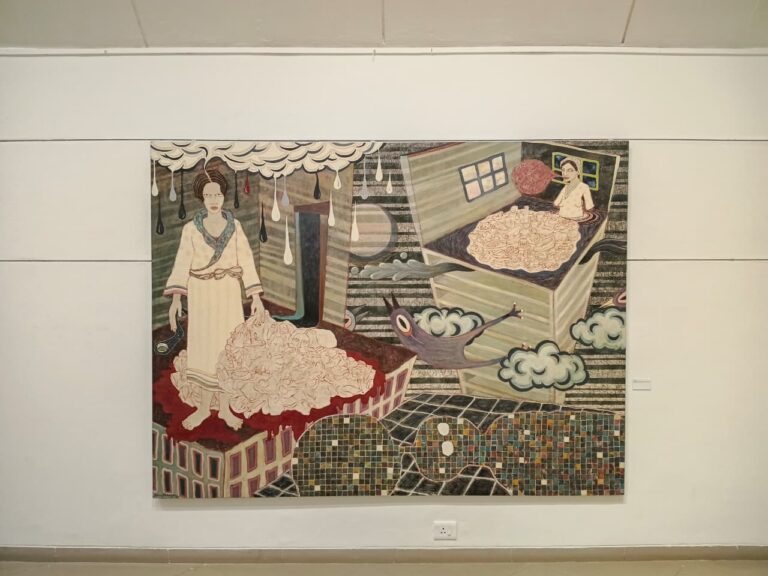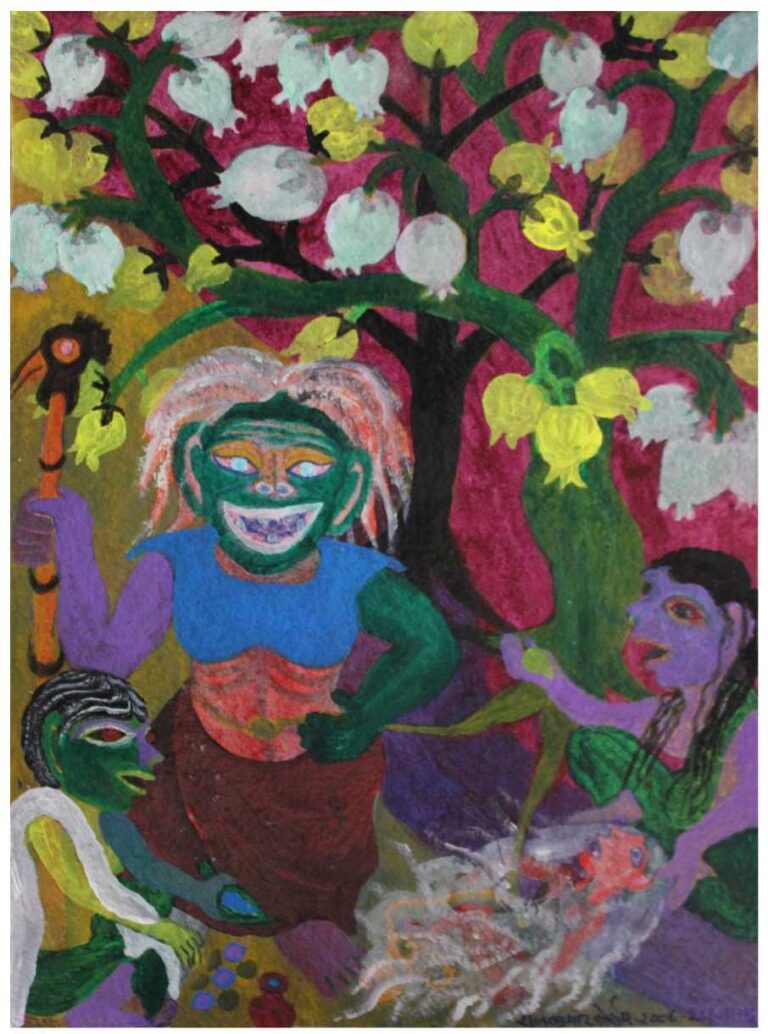
To talk about the work of Iona Brown under the aegis of blackness presents one with the quandary that is the fact that her art is so black that to ponder it under the position of blackness is difficult, to say the least. It is so black that it at times, coincidental to her artistic endeavor and at other times, so prominent that it becomes the focal point of a work. She has earned this right after years of studying at school and out of school, to work with symbols and images in a way that is fresh yet also reverent for the iconography she often creates. Brown is most well known for dabbling liberally from 19th century Japanese erotic (shunga) paintings, early 20th century American vaudeville and hip hop culture. She called these early works a3 Blackface, denoting Afro-Asiatic allegories. Combining the knowledge of an incident of black faced entertainment by white American sailors aboard the vessel Powhatan in 1854 – who performed as part of a friendly mission to help establish trade ties with Japan – and her own experiences while traveling to Japan in 2001, Brown established this important body of work.

Brown began the a3 Blackface series after graduating from San Francisco Art Institute while she was a student in the painting program at Yale University, where she graduated in 2002. Originally worked out on paper in a size of roughly 24” x 36”, Brown’s first works in this vein were done with light watercolors. Throughout the series and in other projects since then, her focus has been on the portrait tradition as it relates to sartorial splendor, decoration and the power of the sitter. While taking those interests in many different directions, she eventually reached a point of saturation for the imagery as it pertained to her original subject matter: smoking hot ganguro (young Japanese women who darkened their skin) in decorative dress with accessories that stressed the artist’s skill with line and composition. Lithe bodies adorned with thick old school jewelry were held in big draping folds of fabric-like kimonos and decorated with intricate patterns.

Combining the earlier historical referents of traditional Japanese dress with contemporary universal b-boy and b-girl style, Brown explored the syncretic relationship between the two cultures which came to be defined together in the language and style of ganguro (also known as contemporary Japanese b-girls). Additionally, black hair, with its attendant cultural signification, (or at least well made hair extensions), was used as another subject of explicit decoration in the paintings. With a reverence for both Japanese and hip hop culture, Brown’s work has explored an interesting intersection of contemporary culture with humor and a delicate touch. Juxtaposing the history of 19th century minstrelsy and the culture of the geisha, Brown has also fiercely lampooned stereotype to create a constructive conversation in the present. One hell of a debut.

By the end of 2004, Brown began to explore tangential aspects of her subjects at play, incorporating wide-ranging narratives that trafficked in the language of science fiction, creating original groups of non-human characters, reminiscent of the Tribbles on Star Trek. Picking up on the language of Afro-Futurism, Brown incorporated the narrative possibilities of science fiction to turn a critical lens on the popular culture so apparent in her work. In a show called ‘a3 the revolution: televised, terrorized, sexualized’ she presented the W.O.I.M.S. (weapons of incoherent mass spending). Picking up from there and not losing sight of her original project, she has now begun to explore a new and fertile territory in painted narratives. Combining her interests in myth, and the politics of representation, Brown will present a new body of work at the Museum of Contemporary Art, Cleveland.















